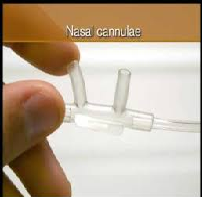Administration of the Right Therapy Order Instructions: Read the following article: Fouladbakhsh, J. (2012). Complementary and alternative modalities to relieve osteoarthritis symptoms.

American Journal of Nursing, 112(3) Supplement 1, S44-S51. Doi: 10.1097/01.NAJ.0000412651.10550.c1
Answer the following Questions:
1-Select one (1) of the specific therapies described in the article from either the mind-body therapies, the energy therapies, natural products or body-based manipulative therapies.
2-How does this therapy help relieve the symptoms of osteoarthritis? Is there any scientific evidence to support the use of the therapy you selected? If so, what is the evidence?
3- How would you discuss this issue with a patient that insists on using the therapy that you selected?
Base your answers on the above article, your required textbooks/chapters and your readings and research of this topic. See below.
APA style:
Required Textbooks & chapters:
Brunner and Suddarth’s textbook of medical-surgical nursing**
• Chapter 3: Critical Thinking, Ethical Decision Making, and the Nursing Process
• Chapter 39: Assessment and Management of Patients With Rheumatic Disorders (sections on “Rheumatoid Arthritis” and “Gout”)
• Chapter 40: Assessment of Musculoskeletal Function
• Chapter 41: Musculoskeletal Care Modalities
• Chapter 42: Management of Patients with Musculoskeletal Disorders (beginning of the chapter up to the section on musculoskeletal infections)
• Chapter 43: Management of Patients with Musculoskeletal Trauma
Pharmacology: A patient-centered nursing process approach**
• Chapter 14: Medications and Calculations
• Chapter 25: Antiinflammatory Drugs
• Chapter 26: Nonopioid and Opioid Analgesics
Maternal & Child Health Nursing**
• Chapter 51: Nursing Care of a Family When a Child has a Musculoskeletal Disorder (from the beginning of chapter up to Disorders of the Skeletal Muscles)
Nursing Diagnosis
• Use your chosen Nursing Diagnosis Guidebook to review the nursing diagnoses specific to the content covered in this module.
Web-based and Other Professional Resources:
• Complementary and alternative modalities to relieve osteoarthritis symptoms (2012)**
• Hand Hygiene in Healthcare Settings
• Hospital: 2016 National Patient Safety Goals**
• Pre-licensure KSAs (2014)**
Textbooks (Chapter numbers and titles may differ in subsequent editions of a given textbook. If your edition is different, use the Table of Contents in the textbook to locate the appropriate chapters to read):
Hinkle, J., & Cheever, K. (2014). Brunner and Suddarth’s textbook of medical-surgical nursing (13th ed.). Philadelphia, PA: Lippincott Williams & Wilkins.
Kee, J., Hayes, E., & McCuistion, L. (2015). Pharmacology: A patient-centered nursing process approach (8th ed.). St. Louis, MO: Elsevier.
Nursing Diagnosis Guidebook – A pocket-size nursing diagnosis guidebook of your choice that is no more than one edition old that includes NANDA International-approved nursing diagnoses, definitions, defining characteristics, and possible nursing Interventions.
Pillitteri, A. (2014). Maternal & Child Health Nursing: Care of the childbearing & childrearing family, 7th edition. Philadelphia, PA: Lippincott Williams & Wilkins.
Administration of the Right Therapy Sample Answer
Administration of the right therapy to help manage the osteoarthritis problem is essential for all patients suffering from the condition. In this case, I would select the mind-body therapy to manage the condition of the patient effectively. These mind-body therapies such as yoga, tai chi, and qigong are important in changing the patient’s emotional or mental state through the utilization of physical movement. The mind-body therapy is vital in relieving the symptoms of osteoarthritis due to the massive benefits it has on the patient been treated (Fouladbakhsh, 2012). The therapy helps in enhancing physical function and alleviating pain experienced. The mind-body intervention also ensures reduced inflammation thus promotes muscle relaxation. Progressive muscle relaxation has been proved to be efficient in alleviating the symptoms associated with osteoarthritis. Patients with osteoarthritis experience pain symptoms which are addressed by adopting the intervention which effectively reduces desensitize central pain and hyper vigilance pathways ( Fouladbakhsh,2012).
There is evidence for the use of the mind-body therapy and its importance in managing osteoarthritis. Based on the randomized control trials evidence, there is proof of the effectiveness of mind-body therapy through the combination of various approaches so as to help manage the condition appropriately. A systematic review of literature based on the trials encourages and recommends the use of the mind-body approach in managing osteoarthritis. The discussion with the patient would be based on the benefits of the approach and how to implement the interventions. I would advise the patient on the importance of using a combination of approach where existential, social and emotional issues are handled as well as checking on the physical problem to enhance long-term benefits to the patient (Fouladbakhsh, 2012). The importance of qigong, tai chi and yoga and other practices such as meditation and imagery would be discussed. In a nutshell, the adoption of the mind-body approach would lead to effective management of osteoarthritis.
Administration of the Right Therapy Reference
Fouladbakhsh, J. (2012). Complementary and alternative modalities to relieve osteoarthritis symptoms. American Journal of Nursing, 112(3) Supplement 1, S44-S51. Doi: 10.1097/01.NAJ.0000412651.10550.c1




